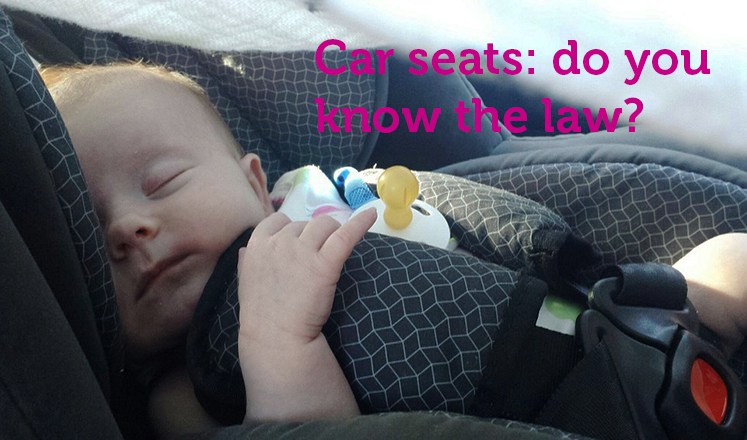Since September 18, 2006, UK law has required children to use a child car seat until they reach the age of 12 or the height of 135cm, whichever is reached first.
This law was put in place to maximise the protection of children in car accidents and to minimise the risk of injury. Car seatbelts are designed and created to protect an adult body in the instance of a collision, however they are not as well suited to the smaller and lighter bodies of children. For this reason, children are required to sit in a ‘booster’ seat to elevate them high enough so that the seatbelt can sit correctly over their shoulder and restrain them appropriately.
However, there have been some changes made to UK law in regards to children’s car seats, and you may not even be aware of them.
Changes to the law
According to recent research carried out by insurance firm Sheila’s Wheels, in the UK around a third of children’s car seats are installed incorrectly. This has resulted in roughly 10% of child car seats being an actual danger to the child sat in them, an undoubtedly unsettling figure for parents.
As of 01 March 2017, all children under 125cm and weighing less than 22kg are required to travel in a high-backed booster seat according to UK legislation. This is because child booster seats without backs are deemed too unsafe for smaller children as they do not offer the appropriate protection and support. Infants smaller than 22kg are believed to be positioned too low in the car, meaning that the seatbelt sits too high on their bodies, and in the event of a car crash they will not be properly secured.
This new legislation only applies to new products being released into the market, parents using existing backless booster seats will still be able to use them and will not be breaking any laws. However, parents can face a £500 fine if they are found travelling with an infant breaching the correct seat requirements for their age, height and weight.
Height-based seats
Law requires height-based car seats to be rear-facing until the infant using them is over 15 months old. Once the child is over the age of 15 months, they will be able to travel in a forward-facing car seat, however parents must check that the seat is suitable for the height and weight of the infant.
Weight-based seats
The appropriate car seat for a child is based upon their weight. The below guide explains the correct car seat to be used for children in each weight range.
0kg to 10kg – Group 0 – Must use a lie-flat or ‘lateral’ baby carrier, rear-facing baby carrier or a rear-facing baby seat using a harness.
0kg to 13kg – Group 0+ – Seat must be rear-facing baby carrier or rear-facing baby seat with a harness.
9kg to 18kg – Group 1 – Use a rear or forward-facing baby seat using a harness or safety shield for protection.
15kg to 25kg – Group 2 – Infants must be seated in a rear or forward-facing child car seat (high-backed booster seat) using a seat belt or alternatively a harness.
22kg to 36kg – Group 3 – Parents must use rear or forward-facing child car seats with high backs using a seat belt or safety shield/harness.
All car seats used in the UK must be legally approved by the EU, so be sure to check that the seat is marked with an ‘E’ to avoid breaking the law.
Exceptions to the law
As with many laws and regulations, there are some exceptions to the law when it comes to infant car seats. In certain circumstances, children can legally travel without the use of a car seat, they are as follows:
- In the case of an emergency, a child over three years old can travel for a short distance without a child car seat
- Children can travel without a booster seat when travelling in a minibus, minicab, taxi, coach or van, however they must not sit in the front
- In cases where there are three children sitting in the back of a car, and a third car seat will not fit, a child who is at least three years old can travel without one
Thinking about your next family car?
Have these changes to the law concerning children’s car seats got you thinking about the suitability of the car seats you use for your children? Or even the suitability of your car for housing the baby booster seats?
Well with our extensive car search, Creditplus can find you the best family cars to keep your children safe in their car seats. Get in touch with our Customer Advisors on 0800 1777 290 or complete our simple, 2-minute online application form and we will be able to find you the perfect family car with the best finance deal for you.
Sources: www.gov.uk and www.Independent.co.uk





 Facebook
Facebook Twitter
Twitter Instagram
Instagram LinkedIn
LinkedIn Youtube
Youtube